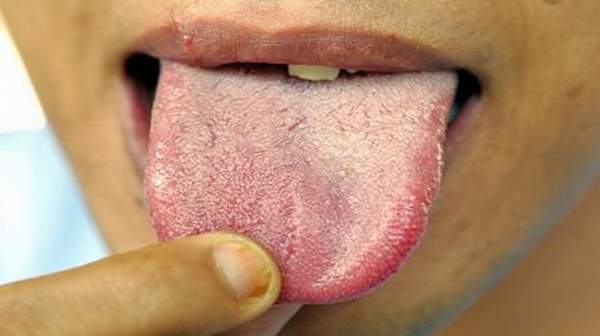What's in this article?
White tongue
White tongue is a coating of debris, bacteria and dead cells on your tongue that makes it look white. Although the appearance of white tongue may be alarming, the condition is usually harmless and temporary. However, white tongue can be an indication of some serious conditions, ranging from infection to a precancerous condition.
A coated tongue isn’t a disease and isn’t usually a sign of anything serious. It’s usually only temporary.
You can try gently brushing it with a tongue scraper and drinking plenty of water to help it improve.
However, sometimes a coated tongue can indicate an infection or more serious condition. You should see your GP for advice if:
- you’re concerned about changes to the appearance of your tongue
- your tongue hurts (read about the causes of tongue pain)
- your coated tongue persists for longer than two weeks
You can read on to learn more about the possible causes of a coated tongue, but don’t use this to diagnose yourself with a condition – always leave that to your GP.
Note that in a minority of people, a coated tongue may never return to its normal colour or texture, even after treatment.
What Causes a White Tongue?
There are a number of things that can cause a whitish coating or white spots to develop on the tongue, including:
- Leukoplakia. This condition causes cells in the mouth to grow excessively. That, in turn, leads to the formation of white patches inside the mouth, including on the tongue. Although not dangerous on its own, leukoplakia can be a precursor to cancer. So it is important for your dentist to determine the cause of white patches on your tongue. Leukoplakia can develop when the tongue has been irritated, and it is often found in people who use tobacco products.
- Oral thrush. Also known as candidiasis, oral thrush is a yeast infection that develops inside the mouth. The condition results in white patches that are often cottage cheese-like in consistency on the surfaces of the mouth and tongue. Oral thrush is most commonly seen in infants and the elderly, especially denture wearers, or in people with weakened immune systems. People with diabetes and people taking inhaled steroids for asthma or lung disease can also get thrush. Oral thrush is more likely to occur after the use of antibiotics, which may kill the “good” bacteria in the mouth. Eating plain yogurt with live and active cultures may help restore the proper fauna in your mouth. Additionally, medications may be used to combat the infection.
- Oral lichen planus. If you have a network of raised white lines on your tongue that has a lace-like appearance, you may be suffering from oral lichen planus. Doctors are often unable to determine the cause of this condition, which often resolves on its own. Practicing proper dental hygiene, avoiding tobacco, and limiting your intake of foods that cause irritation to your mouth may helpful.
Home Remedies for White Tongue
If you suffer from white tongue, there are a few home remedies and lifestyle changes which may provide some relief from the problem. While these ideas are not beneficial to everyone, they can offer some help to many who suffer from the problem. All of these are remedies which can be done at home.
- Sea Salt or Kosher Salt: Some find some relief from mixing salt with water to create a homemade mouthwash. Use it first as a mouthwash, then brush your teeth with salt, including your tongue. This is a favorite home cure for the problem that has been effective with some people with the condition.
- Glycerin: Glycerin is a soft natural substance which helps some people with white tongue. It can sooth their tongue and may also whiten the teeth.
- Acidophilus: This substance works as a coating for the tongue. It is a Probiotic so it also promotes healthy digestion.





